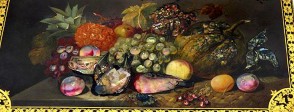These activities and focuses for study are aimed at younger students and extend historical enquiry into cross-curricular work. The resources in A bigger picture can be used in several of these activities.
Use the sequence of images of the case in For the classroom to explore it in detail. Look at each photo in turn and ask the students to describe what they see and what changes. What do they think the object is and what they can tell about the sort of person to whom it may have belonged?
Once you have established what the case is, compare it with a modern pencil case or writing set. Create a chart of similarities and differences. Do more work on Victorian writing equipment with as many opportunities as possible for students to have a go at writing with a dip pen, using blotting paper etc. Why is a modern pencil case so much simpler?
Look at the photo of Mrs Wardroper in A bigger picture and some examples of Florence Nightingale’s letters from the Florence Nightingale Museum website. Then look at some images of Victorian interiors and discuss why this sort of writing case would be more useful than a fixed desk. Students could be asked to draw Florence Nightingale using the writing case and perhaps create a display or presentation about writing in Victorian times.
Ask the students to imagine they are Florence Nightingale and that they have just received this box as a gift. Plan and write a thank you letter to the people of Lea, Holloway and Crich.
Ask students to imagine they are writing for a Victorian newspaper. Create a front cover with a headline, picture and information about Florence Nightingale. The article could be in a local newspaper and record the presentation of the box or could be a more general article about her work.
Design a writing case. This activity could take the form of a simple art and design activity with the students making and decorating a box or simply decorating an existing box. The activity can be extended by asking the students to think about different compartments within the box and they could be given a set of writing tools such as pens, rubbers, paperclips etc. which they have to house in the compartments.
Here are some enquiries that might be used as preliminary research for creative outcomes.
How did people get better in Victorian times?
This enquiry could range from medicines of different sorts to hospitals and advances in medical science such as antiseptics and anaesthetics.
How did people communicate in Victorian times?
Start with finding out about the different ways used by people to communicate in Victorian times including the major inventions of the age such as the postage stamp and telephones.
How did Victorian children learn to write?
Find out about the tools used by children in Victorian times when they were learning to write. Use the resource from Causeway Museum Service in For the classroom to investigate and practise the letter shapes taught in a Victorian classroom.
How did people communicate in Victorian times?
The Victorian period saw the invention or mass popularisation of many communication devices still used today. Research what communication methods were first used in Victorian times, for example, the fountain pen, typewriter and telephone.
This object could be used as a starting point to compare Victorian and modern communications and make links to the work of modern communication inventors such as Tim Berners-Lee. Who was the most important inventor from the Victorian period?
Investigate different ways of presenting information including written accounts, drawings, giving a talk, diagrams and graphs.
How important was Florence Nightingale?
This provides an opportunity to compare Florence Nightingale’s work with that of other nurses working in the Crimean War such as Mary Seacole and Elizabeth Davis and to understand something of the important concept of historical significance.


